What's Up? April 2025
After a very astronomically eventful March, we move swiftly into April meaning Spring is well and truly underway bringing with it daffodils blooming and lighter nights. This doesn’t spoil the fantastic feast of constellations and objects observable this month in our skies!
Spring means it’s galaxy season at Kielder, so we’ll be pointing out a few for you to try and observe.
Constellations
With the magnificent winter constellation of Orion slipping down towards the western horizon relatively soon after sunset, taking with it the Seven Sisters and the brightest of stars, Sirius, we welcome the great constellations of Summer starting to appear in the east.
Appearing just below Boötes (easy to find because of its bright alpha star Arcturus) is the small but impressive constellation of Corona Borealis (Northern Crown) with bright diamond-like star "Alphecca" representing the central jewel. We also start to see Hercules rising higher into the sky offering the chance for us to observe the magnificent “Great Globular Cluster in Hercules” (or M13) which is a cluster of up to 300,000 stars visible through a small telescope. The cluster is 23,000 lightyears distant!
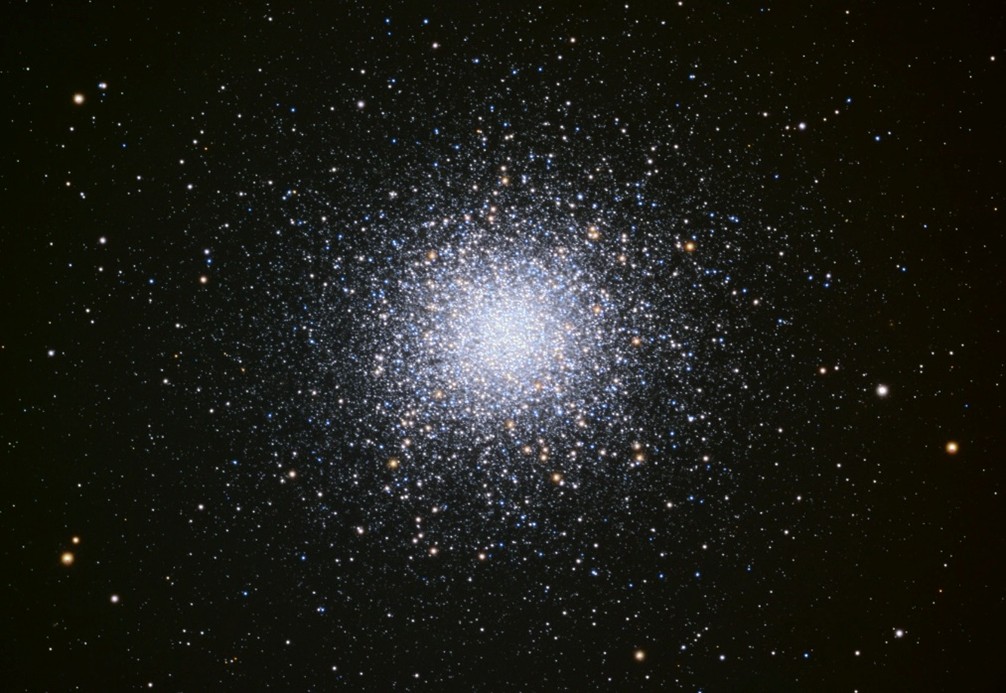
The great globular cluster in Hercules (M13) Image credit: Wikipedia
The small constellation of Lyra rises alongside Hercules containing the brilliantly bright star Vega. Vega seems to twinkle and sparkle like a diamond on account of it’s very bright light refracting as it passes through the Earth’s atmosphere to meet your eye. High above your head near the Zenith (point directly above your position) will be the familiar constellation of Ursa Major (The Great Bear). Most people are familiar with the asterism of “The Plough” making up about a third of the constellation. Other names for it include “The Big Dipper” and “The Saucepan”.
Deep Sky Objects
As mentioned before, Spring means it’s galaxy season and 4 galaxies can be found in close proximity to “The Plough.” The red circles in the image below highlight the location of the galaxies. With Ursa Major being directly overhead, it is the ideal time of year for observing these galaxies.
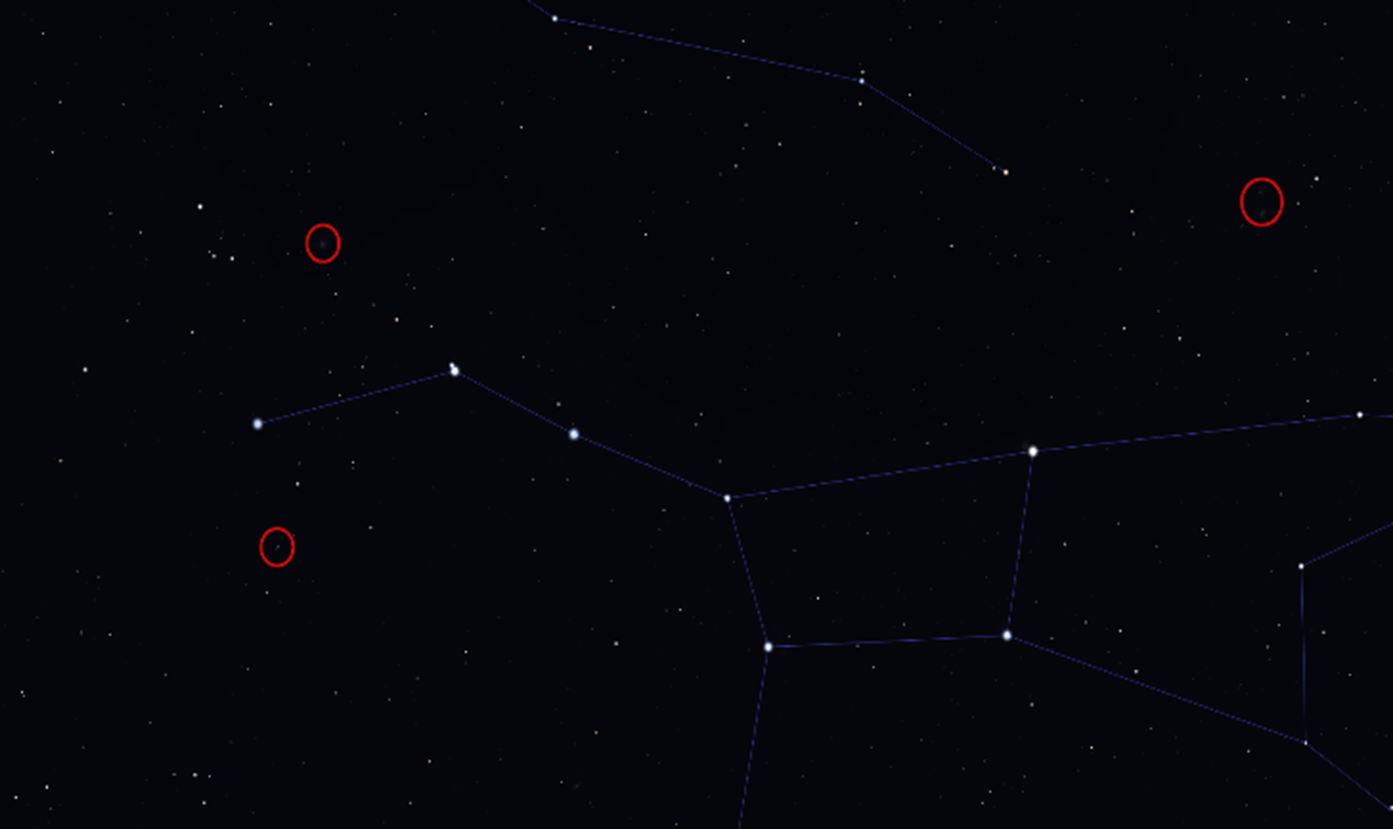
Image Credit: Stellarium
M81 & M82
Bode’s Galaxy (M81) and the Cigar Galaxy (M82) can be seen using a small telescope and are found to the top of the Plough. They are both around 12 million lightyears distant with M81 being a face-on grand design spiral galaxy and M82 being a starburst galaxy. To find them, draw a line between the bottom left and top right star in the pan of the plough and then keep going for about the same distance in the same direction.
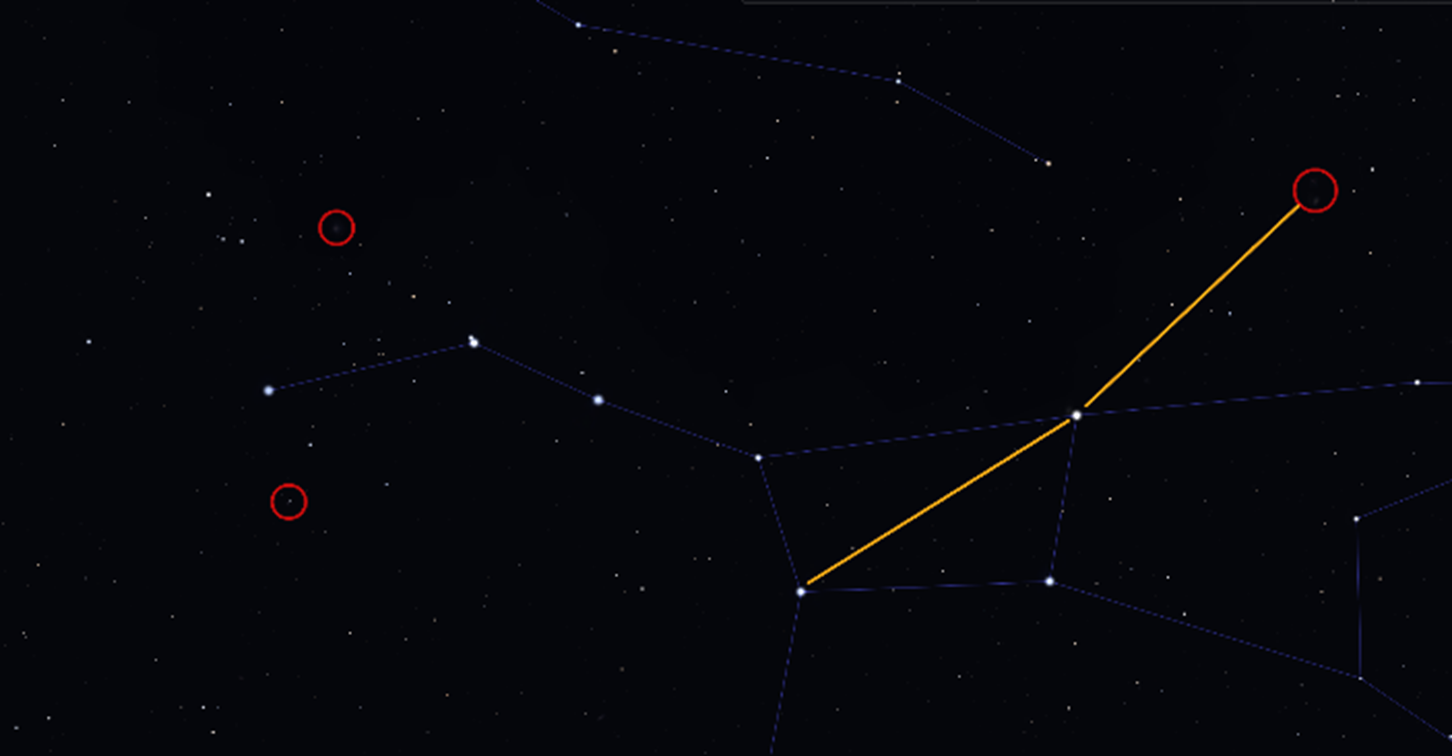
Using the plough to locate M81 & M82. Image credit: Stellarium
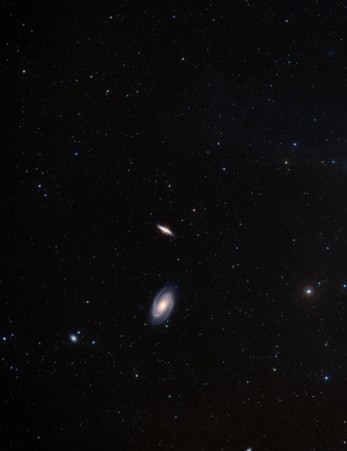
Bode’s galaxy (M81) with Cigar galaxy (M82) above it.
Image credit: ESA
M101
The pinwheel galaxy is regarded by many astronomers to be the most photogenic galaxy to image due to it being face-on and large regions of star-forming nebulas are sprinkled within its spiral arms. The galaxy lies around 21 million lightyears away. It can be found at the top of an imaginary triangle formed by using the first 2 stars of the plough handle (Alkaid & Mizar) as the base.
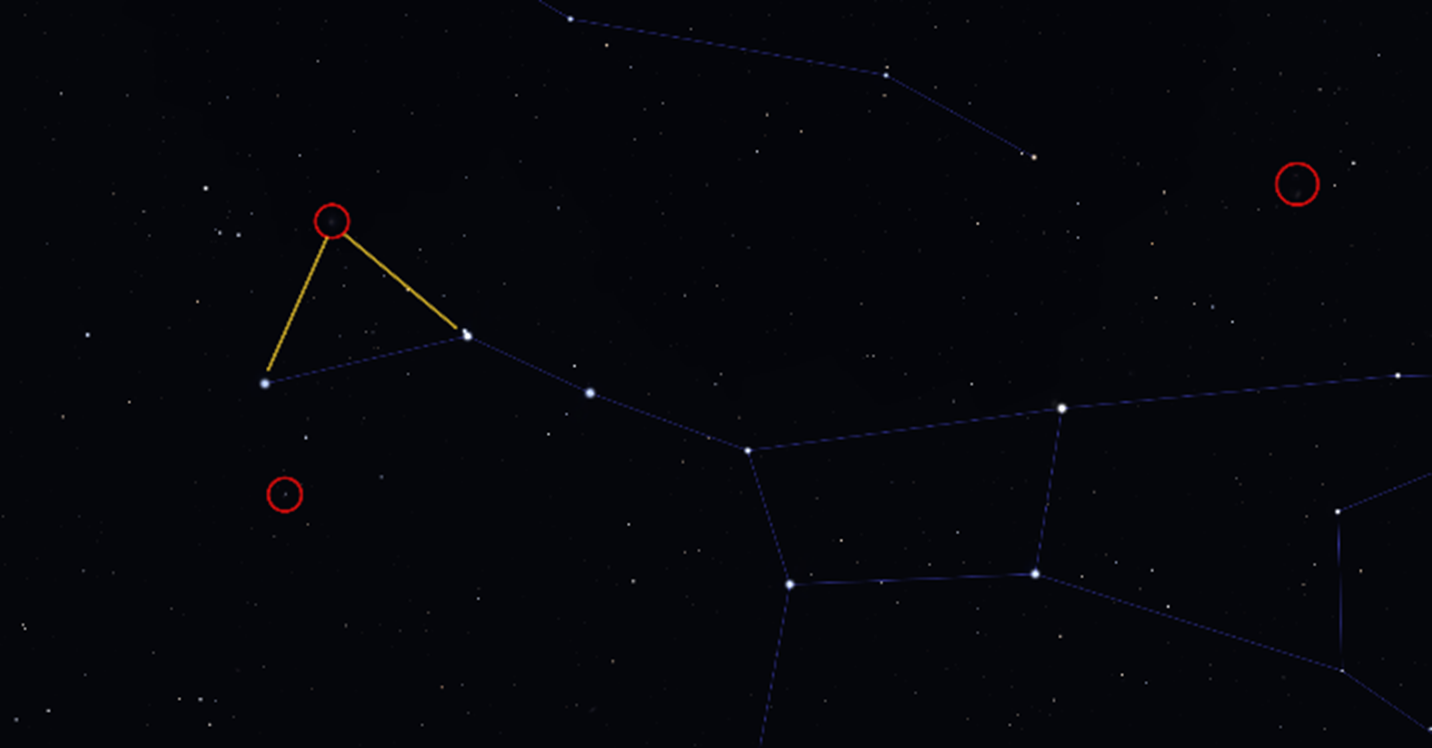
Draw an imaginary triangle to find M101
Image credit: Stellarium
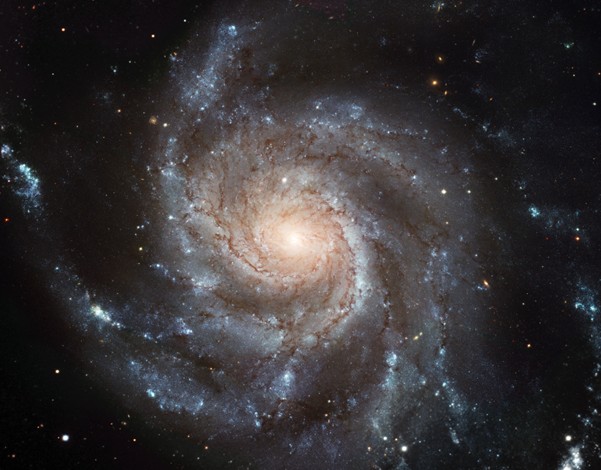
Image credit: ESA
M51
The whirlpool galaxy is the most distant of our selection at a staggering 31 million lightyears away! It was the first galaxy to be described as a spiral when observed by William Parsons, 3rd Earl of Rosse through his 72-inch reflecting telescope at Birr Castle in Ireland in 1845. It can be found below the first star of the plough handle (Alkaid).
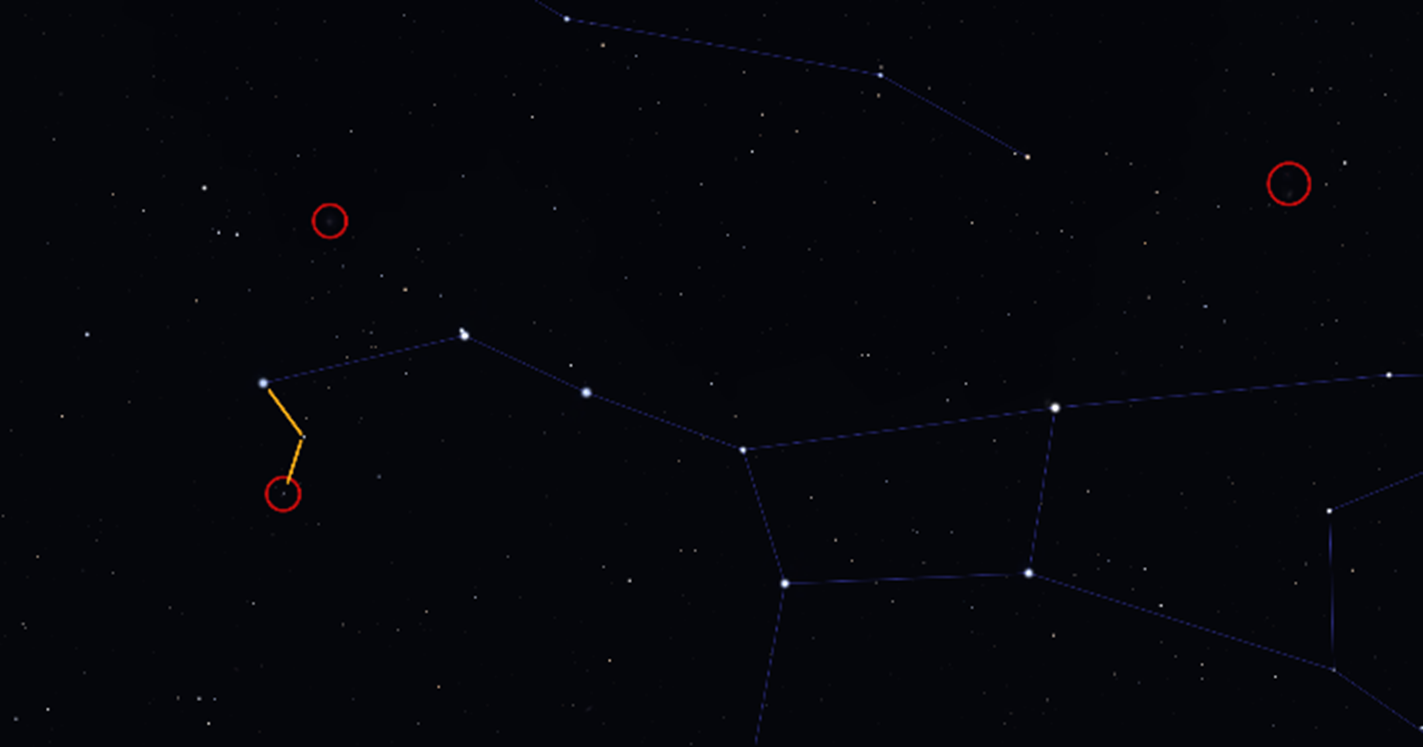
M51 is found under the handle of the plough
Image credit: Stellarium
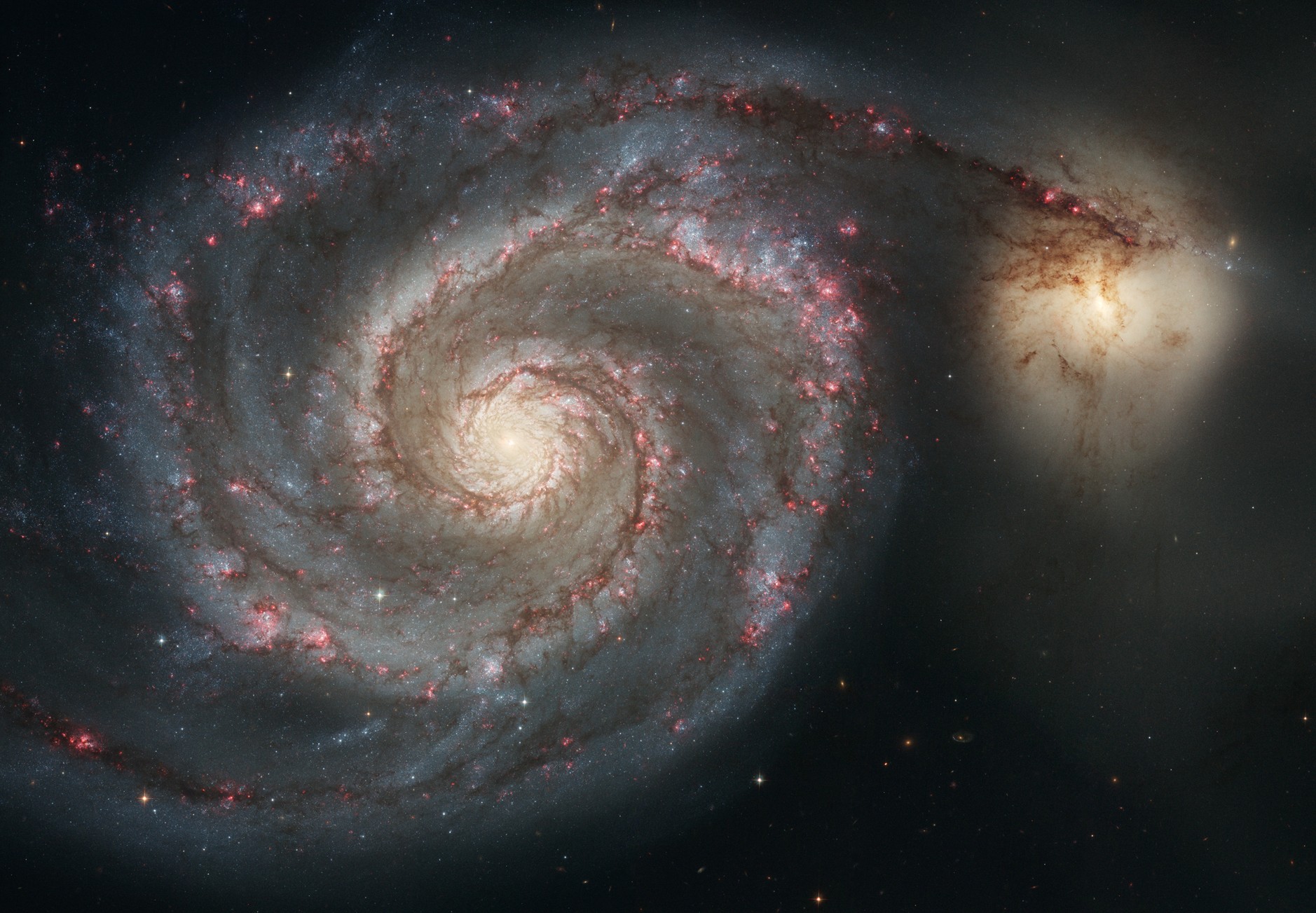
Image credit: ESA
Meteor showers
The Lyrid meteor shower in 2025 will peak on April 22, but you may see some Lyrids between 16–25 April. The shower will be best viewed in the late evening of April 21 until dawn on April 22. Typically, the shower will produce around 18 meteors per hour in a clear sky and this year, no Moon will be present until after 4am, maximising the chances of seeing the meteors. The radiant, or point from which the meteors appear to come, will be between the constellations Lyra and Hercules and is marked on the image below. The Lyrid meteor shower is associated with Comet C/1861 G1 Thatcher and it is one of the oldest known meteor showers: they have been observed for 2,700 years. (The first recorded sighting of a Lyrid meteor shower goes back to 687 BC by the Chinese.) Don’t forget to make a wish if you see any!
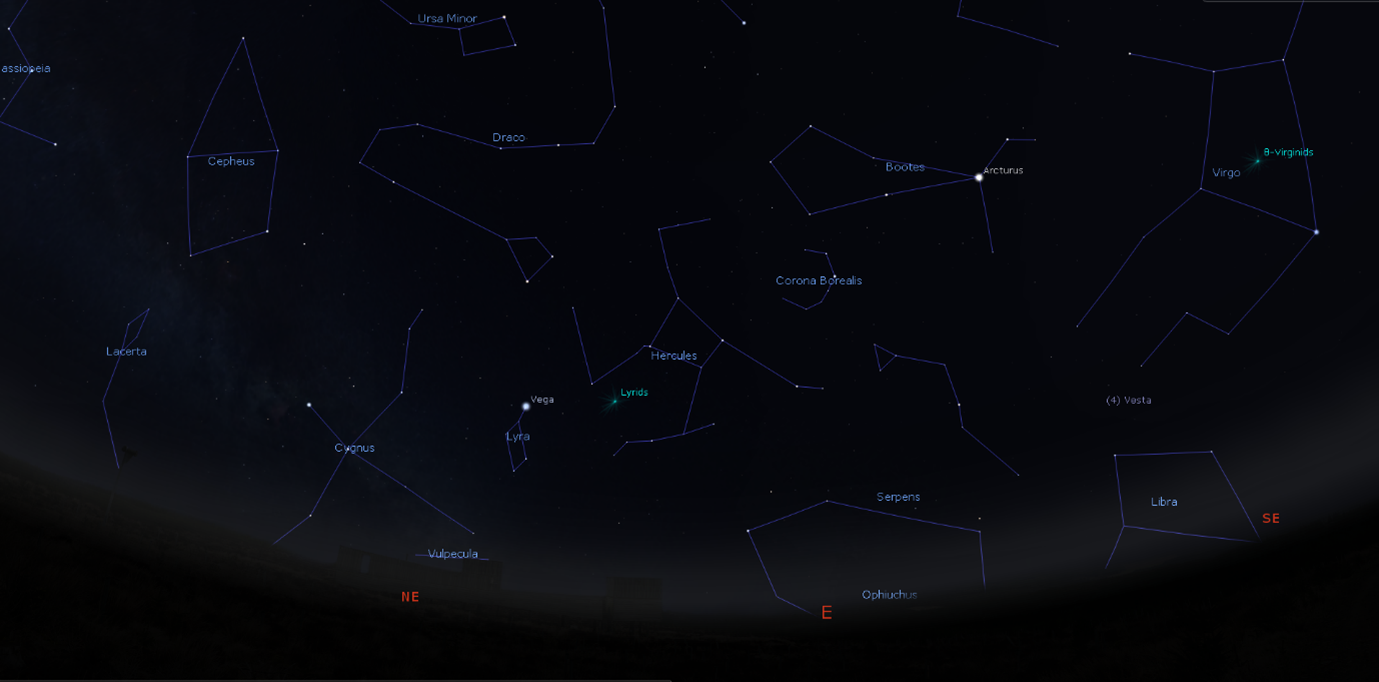
Spring sky looking East showing popular spring constellations and radiant of Lyrid meteor shower.
Image credit: Stellarium
Planets
Both Mars and Jupiter will still be visible throughout most of April although Jupiter will be slipping further towards the western horizon nearer the end of the month.
The Moon
5th April – First Quarter
13th April – Full Moon
21st April – Last Quarter
27th April – New Moon
Have a great Easter and wishing always for clear skies!
















